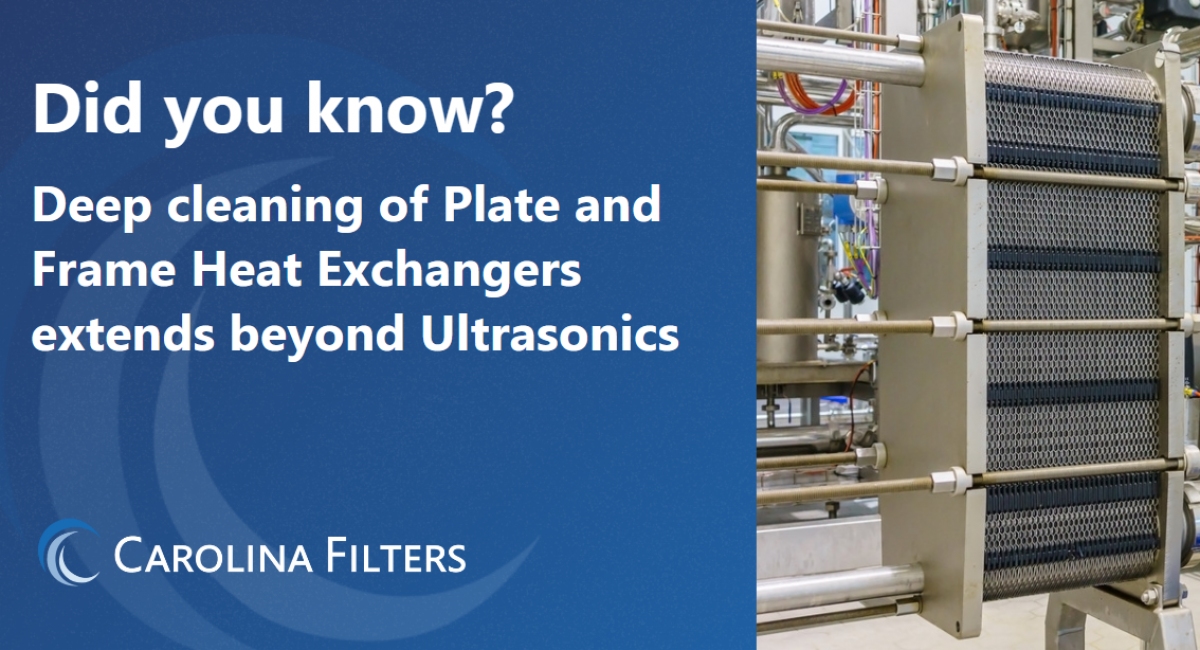Plate and Frame Heat Exchangers
While ultrasonic cleaning is a common method used to clean plate and frame heat exchangers, there are situations where additional cleaning methods may be necessary to effectively remove stubborn deposits or fouling. If the heat exchanger plates have significant scaling or mineral deposits, ultrasonic cleaning may not be able to dislodge or remove all the buildup. In such cases, specialized chemical cleaning agents, mechanical methods, and high temperature processing may be required to break down and remove the scale effectively.
Heat exchangers used in industrial applications may accumulate contaminants which are not easily removed with water-based cleaning methods. Contamination such as oil and grease or biological contaminants such as algae or bacteria will require specialized targeted chemistries to ensure complete removal of contaminants.
In some cases, individual plates in a plate and frame heat exchanger can be permanently welded together. In these circumstances, the contamination will reside within narrow channels and tight spaces between the plates. Ultrasonic cleaning will not reach all areas uniformly and alternative cleaning methods are necessary. In these cases, advanced inspection practices are necessary to confirm that all contamination has successfully been removed from the channels. Without this confirmation before reassembly, the heat exchanger will not run efficiently and the time between necessary cleanings will be significantly reduced. If residual contamination is left over multiple cleaning and running cycles, it will eventually carbonize to the point where it cannot be returned to an operational state, requiring large investments for replacement.
Carolina Filters has numerous cleaning options with proven success in all these applications. Our advanced inspection techniques provide the confidence that we are returning a fully cleaned part into service which will result in higher efficiency and reduced downtime.




